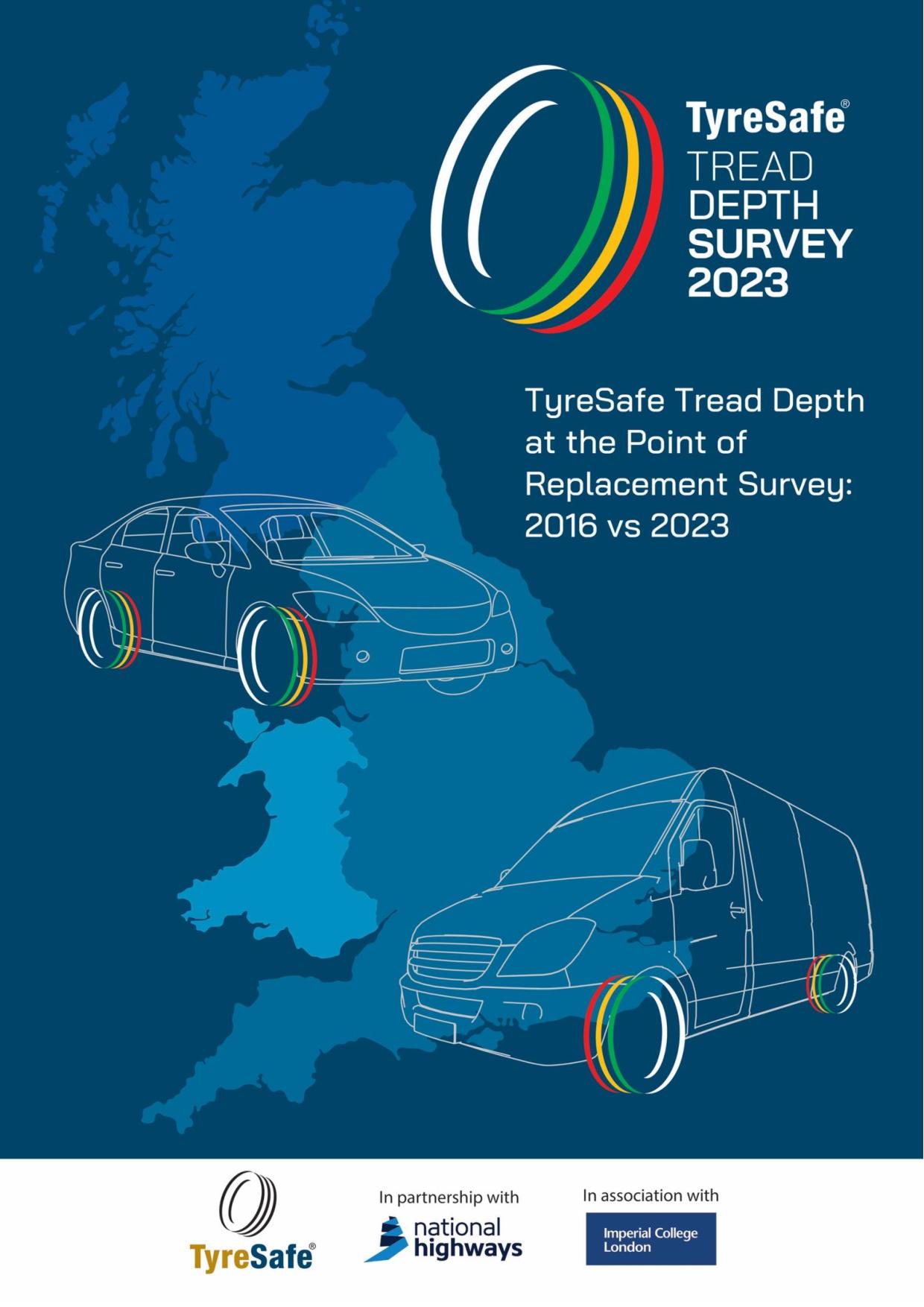Overview
Produced in conjunction with National Highways and Imperial College London, this report aims to compare the findings of two tread depth surveys conducted at the point of tyre replacement. The first survey took place between October 2015 and April 2016, while the second was conducted between April 2022 and March 2023.
The 2016 survey collected data over six months, while the 2023 survey covered a 12-month period, providing a larger sample size and deeper insights.
Data for both surveys was sourced from TyreSafe’s tyre retail supporters, encompassing both national chains and independent retailers.
Additionally, data from vehicle manufacturers’ franchised service centres was included as an addendum.
The 2023 survey involved 428 outlets and examined 549,558 car and light commercial vehicle (LCV) tyres.
DOWNLOAD THE FULL PDF REPORT HERE
Overall Findings
- Reduced illegal and borderline tyres: There was a significant decrease in the percentage of illegal (<1.6mm) and borderline (<2mm) tyres at the point of replacement between 2016 and 2023.
- Continued concern: Despite the improvement, a substantial number of tyres (16.7%) were still illegal when replaced.
- Potential impact: The findings suggest that millions of vehicles in Britain may be driving on illegal tyres.
Regional Variations
- Regional disparities: The percentage of illegal tyres varied across different regions of Britain.
- Targeted interventions: The regional data can be used to focus road safety efforts on areas with higher rates of illegal tyres.
Contributing Factors
- Consumer awareness: Lack of awareness about the importance of regular tyre checks is a major factor contributing to the high number of illegal tyres.
- Vehicle maintenance practices: The data suggests that drivers who use franchised service centres tend to have fewer illegal tyres, possibly due to more proactive maintenance.
- Tyre aging: Reduced mileage during lockdowns may have accelerated tyre aging, leading to increased tyre defects.
Recommendations
- Continued monitoring: A follow-up study in 2025 is recommended to assess the ongoing trend.
- Increased awareness: Efforts to educate drivers about tyre safety and the importance of regular checks should be intensified.
- Stricter enforcement: Stronger enforcement of existing laws and increased publicity for prosecutions can deter dangerous driving practices.
- Targeted interventions: Local road safety organisations should use the regional data to plan targeted interventions.
- Employer engagement: Leveraging employer-employee communication can raise awareness of road and tyre safety.
Conclusion
The report highlights the importance of addressing tyre safety issues to reduce road incidents and improve overall road safety.
DOWNLOAD THE FULL PDF REPORT HERE

